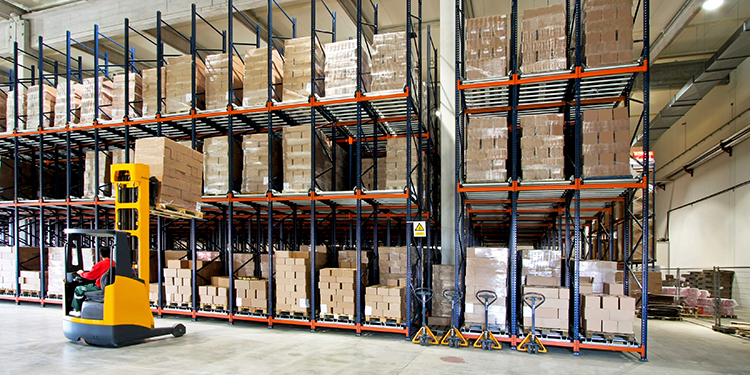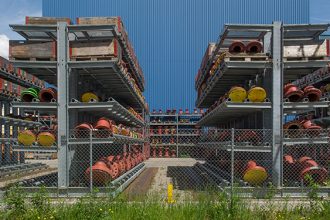Jammed Pallet Flow System? Follow These Best Practices To Safely Clear The Hang-Up

Pallet hang-ups can happen in even the best maintained, properly loaded pallet flow rack system (also known as “gravity flow”). Jams can be caused by a variety of reasons, including a pallet that’s settled onto the tracks, debris in the gravity wheels or roller lanes, temperature and humidity changes that have affected the wood pallet, or a broken stringer. Regardless of why pallets are no longer flowing smoothly from the point of loading (also called “charging”) to the pick face, if a jam has occurred in a pallet flow lane, there are a variety of best practice approaches to safely un-stick a pallet in the lane. Notably, none of these best practices require an operator climbing into a live, loaded flow system, which has a high potential of injury and is never recommended.
Follow these four techniques in order to successfully clear a pallet flow rack jam.
- Plugging: This is the first technique that should be tried to restore pallet flow. In the plugging process, a forklift is positioned squarely at the discharge/pick face end of the lane to lift the front pallet 1-inch above the rollers. Then, the forklift firmly pushes the lifted pallet against the pallet load behind it to shift it back by 3-4 inches. Next, as the forklift backs out with the first load onboard, the subsequent loads should follow. If plugging does not work, the removed pallet should be replaced in the pick face position and the entire system should be inspected to identify the type and location of the blockage.
- Force Loading: The second technique to clear a jam is to attempt to dislodge a stuck pallet from the loading end of the lane by placing another loaded pallet into the system. The force generated by the new pallet as it glides down the lane should dislodge the stuck one. If not, continue to load the lane until the pallet releases or the lane is full.
- Adjacent Lane Clearing: If loading the lane behind the stuck pallet does not resolve the hang-up, the last pallet loaded into the lane should be removed. Then, all pallets in the lane bordering the one with the jam should likewise be removed to clear it. After securing the empty, adjacent lane with tie-offs and any other facility-mandated safety procedures, an operator may enter it to inspect and diagnose the reason for the hang-up. If it is possible to safely correct the issue manually, the operator should do so.
- Pick Face Loading: If the jam cannot be cleared manually, the final technique is to load pallets from the pick face/discharge end of the lane until the new pallets reach the stuck pallet. This process is intended to push the hung-up pallet back toward the loading end of the lane for removal. The operator in the secured adjacent lane can also report to the lift truck driver about the progress of new loads upon contact with the stuck pallet.
To learn more about best practices in safe operation of pallet flow racks, click here.


